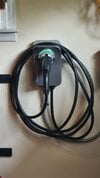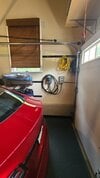I opted to install the Tesla wall charger instead of a JuiceBox/other supported hardware, and am therefore not eligible for the install rebate OR the hourly off-peak charging discount.
Setting aside whether or not that was a good decision ... I had a difficult time figuring out what the deal was with peak/off-peak times, and the rate I was being charged per kwh.
I spoke to someone and thought I'd share what I found for anyone who's in the same boat.
There are two residential rate plans: Standard (RS) and Time of Day (RT). The rates fluctuate by season, but right now the rates are (approximately) as follows:
RT - Offpeak (9pm - 9am) - $0.098/kwh
RT - Peak (9am - 9pm) - $0.17/kwh
RS - $0.11 For the first 600kwh/month, $0.16/kwh beyond that
I was on RS, so my "start charging at midnight" scheduling wasn't saving me any money.
To switch to RT, I have to get a different meter installed, which is free, and I don't need to be home for. The new meter supports both RT and RS, so if at any point in the future I want to go back to RS, I can call them up to change it.
Hope this helps someone who had the same question as me, sorry if this post is a duplicate (it's my first!) but like I said I wasn't able to find any info for this specific use case.
Setting aside whether or not that was a good decision ... I had a difficult time figuring out what the deal was with peak/off-peak times, and the rate I was being charged per kwh.
I spoke to someone and thought I'd share what I found for anyone who's in the same boat.
There are two residential rate plans: Standard (RS) and Time of Day (RT). The rates fluctuate by season, but right now the rates are (approximately) as follows:
RT - Offpeak (9pm - 9am) - $0.098/kwh
RT - Peak (9am - 9pm) - $0.17/kwh
RS - $0.11 For the first 600kwh/month, $0.16/kwh beyond that
I was on RS, so my "start charging at midnight" scheduling wasn't saving me any money.
To switch to RT, I have to get a different meter installed, which is free, and I don't need to be home for. The new meter supports both RT and RS, so if at any point in the future I want to go back to RS, I can call them up to change it.
Hope this helps someone who had the same question as me, sorry if this post is a duplicate (it's my first!) but like I said I wasn't able to find any info for this specific use case.




